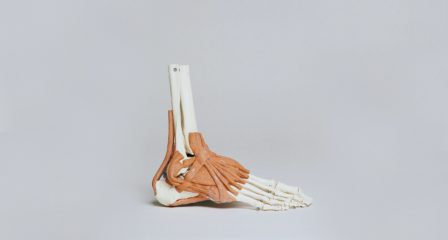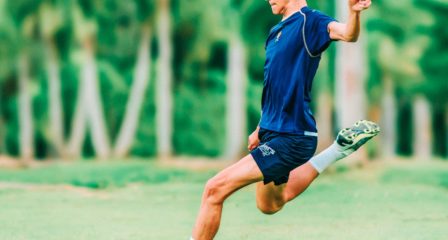Breast size and back pain: Is there a relationship?
While it is widely recognised within literature that larger breasts can contribute to a range of painful presentations, breast size often isn’t discussed in management plans. Over the past 20years, average bra size has increased from a 12B to 12DD which means we should be considering breast size as a contributing factor even more now than we had previously.
We know that:
- Larger breasts are associated with neck, back, shoulder and upper limb pain and symptoms.
- Increased breast volume increases thoracic kyphosis (the curvature of your upper back), which in turn forces the head and shoulders forwards, changing the biomechanics of the whole upper body.
- For women to be able to manage these postural changes, they need to be strong and involve themselves in regular physical activity. Research has shown that the opposite is in fact true; women with larger breast volumes are more likely to have reduced strength through their upper back muscles. This means they have less strength to tolerate the inevitable postural changes associated with larger breasts and therefore more likely to develop pain.
- There is a negative relationship between larger breast size and reduced physical activity; one in five adult women and over half of adolescent girls have reported breasts to be a barrier to exercising. This is thought to be because of;
- Breast pain during exercise; up to 72% of women have reported breast pain during exercise.
- Other areas of pain (related to breasts, ie neck/shoulders) during exercise,
- Embarrassment of the velocity of breast movement while exercising,
- An inability to find a comfortable sports bra.
What can we do?
The most important thing is to wear a well-fitted bra. Research has indicated that anywhere from 70-100% of women are wearing the wrong size bra!
It is also thought that women should replace their bras every 3-6 months and have a professional fitting each time they purchase new bras. This is because the fabrics (unfortunately) often quickly stretch and lose their elasticity, therefore the support they provide gradually reduces over time as the bra stretches and loses shape.
We are currently seeing a huge increase in the number of young women following the fashion trend of wearing a crop-top type sports ‘bras’ for day-to-day living as well as when they participate in high impact sports ie. running. Many of these bras do not provide enough support to the breasts, merely compressing them against the chest wall. This doesn’t give the necessary support, nor does it offload the thoracic spine and shoulders in the way necessary to facilitate normal upper body movement.
Sports Bras
It is thought that as few as 41% of women in Australia wear a specialised sports bra when they are engaging in physical activity, with the majority of women choosing to wear their everyday bras. This is a concern for several reasons;
- Everyday bras are not designed to support and control vertical displacement of breast tissue,
- Majority of women have a poorly fitting everyday bra,
- If breasts are inadequately supported they have the potential to impede full shoulder range of movement, limit thoracic rotation and increase thoracic flexion. In any sporting environment, this is going to affect performance.
- There is potential that long term stress and stretch to breast tissue can cause long term changes. This, in turn, has potential to permanently change the weight distribution and change the pattern of loading through the upper body.
IN SUMMARY…
Bras are important! Breast tissue is heavy, and the larger the breast the more likely they are to affect your posture, strength and therefore increase your likelihood of developing pain. Women should be replacing their bra’s every 3-6months and ensuring they have a professional fitting each time they replace them. If you feel that your breasts may be contributing to any of the pain or symptoms that you may be experiencing, please call The Injury Clinic on (03) 5229 3911 or email info@theinjuryclinic.com.au for more information.



